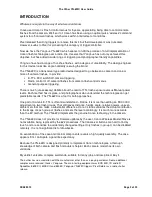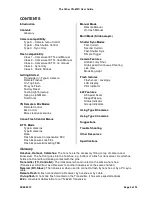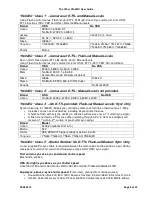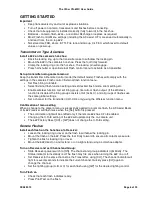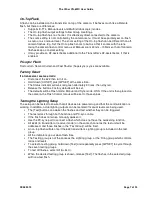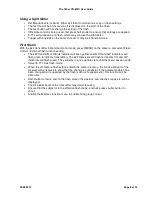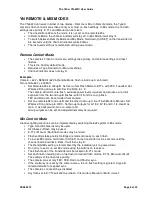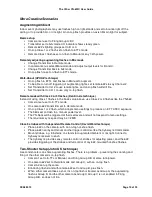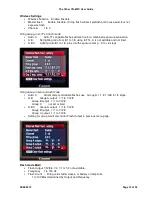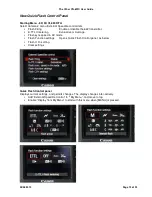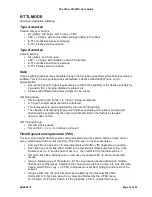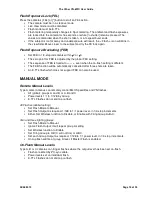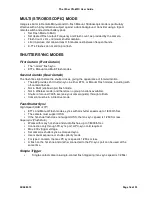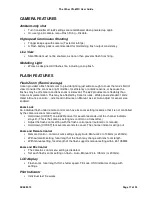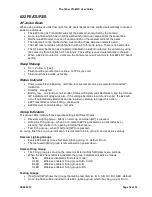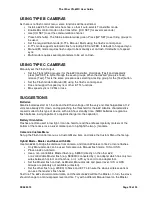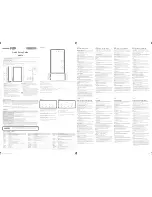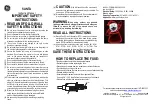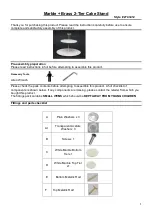
The Other YN-622C User Guide
28/08/2013
Page 4 of 23
CAMERA COMPATIBILITY
YN-622C “Type A” Camera – Camera Menu Control (2007 and on)
Provides remote control of flash settings on class 1 flashes:
Flash Mode (E-TTL with FEC, Manual with global level); Shutter Sync (1
st
curtain, 2
nd
curtain,
HSS/Supersync); Firing groups (E-TTL Ratios, Manual levels); Zoom control; Channels.
•
1D III, 1Ds III, 1D 4. Also ID X but Ratios said to be unreliable.
•
5D II, 5D III, 6D, 7D
•
40D, 50D, 60D
•
450D XSi, 500D T1i, 550D T2i, 600D T3i, 650D T4i (100D, 700D not yet tested)
•
1000D XS, 1100D T3
•
EOS-M (no AF-assist)
Provides as above except for Firing Groups (E-TTL or Manual) and Channels.
•
G12, G15, G1X, SX20 IS, SX30 IS, SX40 HS, SX50 HS, F335
YN-622C “Type B” Camera – Flash Button Control (prior to 2007)
ETTL with FEC, Manual output levels, HSS and Supersync.
•
1D II (Not 1D or 1Ds)
•
5D
•
10D, 20D, 30D
•
300D D-Rebel, 350D XT, 400D XTi
YN-622C “Type C” Camera - Sync only
Standard hot-shoe - Synchronised Fire!
•
Supports single-contact hot-shoe cameras.
•
Includes many Nikon and other standard ISO hot-shoe cameras.
FLASH COMPATIBILITY
Most flashes with a standard hot-shoe are “compatible” - they can be triggered synchronously.
(The 622 is rated at only 6 volts on the trigger contact of its hot-shoe. The PC-sync connection can
withstand 300 volts.) But the YN-622 is bought for its control abilities with a type A camera.
A bit of relevant Speedlite history -
1. There was an Accessory shoe on camera to mount a device, and a centre-pin contact to
fire the flash. All settings were made on-flash. The camera did not know what they were.
2. More pins were added, and TTL, A-TTL, E-TTL and E-TTL II were developed as key flash
technologies. The camera became more aware of flash settings. Settings still on-flash.
3. Canon implemented an off-camera system using a Master flash to drive one or more slaves
using light-pulse coding. The camera was taught to read the flash settings, and act
accordingly. FEC was added to the camera. There was no provision on the camera for
setting Manual output levels, so there was no need to implement a path in the flash's hot-
foot. Settings still on-flash.
4. A better interface was required, and in-camera. Canon designed the flash control menus
(from 1D-III, March 2007 on) so that the camera could both read and set ALL settings in the
flash. This meant major design requirements for the flashes. All flash settings needed to be
digital. A path through the flash hot-foot to the processor had to be created which could set,
not just read the flash settings. They could now be set on-camera for Mark II and later
flashes. The only flashes which can be fully controlled by flash menus are ones that have
the required communication through the hot-foot.
5. After the release of the YN-622C, Canon released the 5DIII, ST-E3, 1D X and 600EX-RT,
which provide a “radio wireless” facility. This added features like mixed firing modes
(ETTL/M/Auto), channels 5-15, Wireless IDs and groups D & E. The 622C cannot use
these extensions, and the camera must be in “optical wireless” mode.


